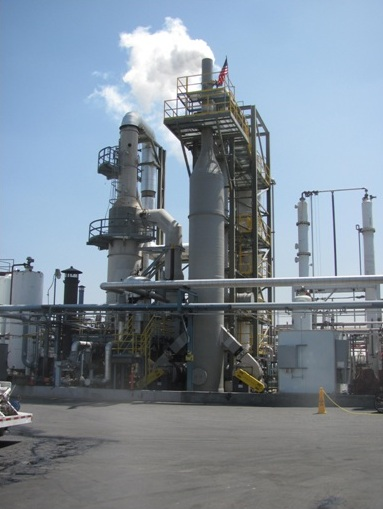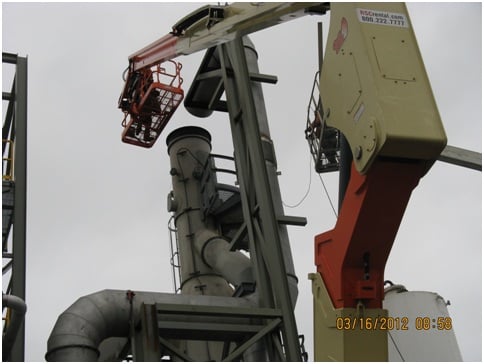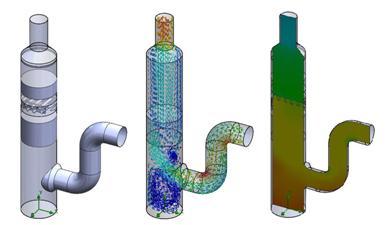Authors: Zach Schulz and Andy Olds
Recently, Envitech was tasked by a leading waste oil refiner in Southern California to supply and install a wet scrubber on a process gas afterburner. The goal of the project was to reduce the sulfur emissions from the facility to avoid the SOx (sulfur oxides) reclaim program in the Southern California Air Quality Management District. The SOx reclaim program is a cap and trade program that requires emitters to secure or purchase the right to emit sulfur into the atmosphere. Details of the project can be found in the article "High Efficiency SO2 Scrubber Case Study for a Waste Oil Re-Refiner" which outlines the incredibly stringent SO2 emissions standards that Envitech's wet scrubber successfully met.

Envitech; holding a general contractor's license in California; has the capability to not only supply the wet scrubber but to also supply and install the support equipment for the project. As the project developed, the waste oil supplier expanded Envitech's scope to include nearly all of the work required for the wet scrubber, including the supply, installation, and warranty for the ductwork from the existing afterburner to the wet scrubber system.
Envitech faced some unusual challenges with the ductwork for the existing afterburner. The afterburner itself is composed of refractory lined carbon steel, with an average exit temperature of 1600°F and with excursions to 2000°F. Exhaust gas from the afterburner can also contain 1000ppm sulfur dioxide (SO2) with the potential of some sulfur trioxides (SO3). Further, 90% of the time the gas passes through a heat exchanger that reduces the temperature to as low as 600F, with outages on the heat exchanger once a week. Thus, Envitech had to provide an exhaust duct that could handle temperatures from 600F to 2000F with an elevated concentration of sulfur compounds, cope with thermal cycling, and operate near the acid dew point.
Envitech consulted with Rolled Alloys to determine the best alloy for the design conditions. Separately, Envitech evaluated the cost and expected lifetime of refractory lined duct.
RA 253 MA was chosen for this application for its great resistance to high temperatures up to 2000°F. It also has a very lean nickel content (11%) which is beneficial for sulfur bearing environments at high temperatures. After working with Rolled Alloys and its subcontractors, Envitech found that the cost of a refractory lined duct, including installation, was slightly higher than that of the RA 253 MA material suggested by Rolled Alloys. Further, Envitech found that insulated RA 253 MA material would have a longer expected lifetime than the refractory lining especially due to the thermal stress created by the temperature cycling and the aggressive nature of the sulfur in the gas.

With this information, Envitech presented the RA 253 MA option to the waste oil refiner and jointly agreed that the RA 253 MA material was the best option for the ductwork. Envitech's subcontractors built the ductwork out of Rolled Alloys RA 253 MA material on-time and on-budget, with startup occurring in May, 2012. The ductwork is still in service with no reported issues.
With the help of Rolled Alloys, Envitech was able to provide ductwork that was easy to install, cost-effective, and within budget, contributing to success on the project that has enabled the waste oil refiner to avoid the SOx reclaim program by lowering its emissions.
The project was considered a success by all parties and Envitech is currently working with the waste oil refiner on a second wet scrubber project with similar design conditions and intends to use the RA 253 MA material.
The above article was jointly written by Zach Schultz of Rolled Alloys and Andy Olds of Envitech. The article was co-published on the Rolled Alloys Technology blog and Envitech's Air Pollution Control Innovations blog.
Envitech is an air pollution control equipment supplier serving industrial, medical, refinery and utility customers since 1993. Their website is www.envitechinc.com. You can contact Andy Olds directly at aolds@envitechinc.com.
For more information on this project, please read our white paper.





